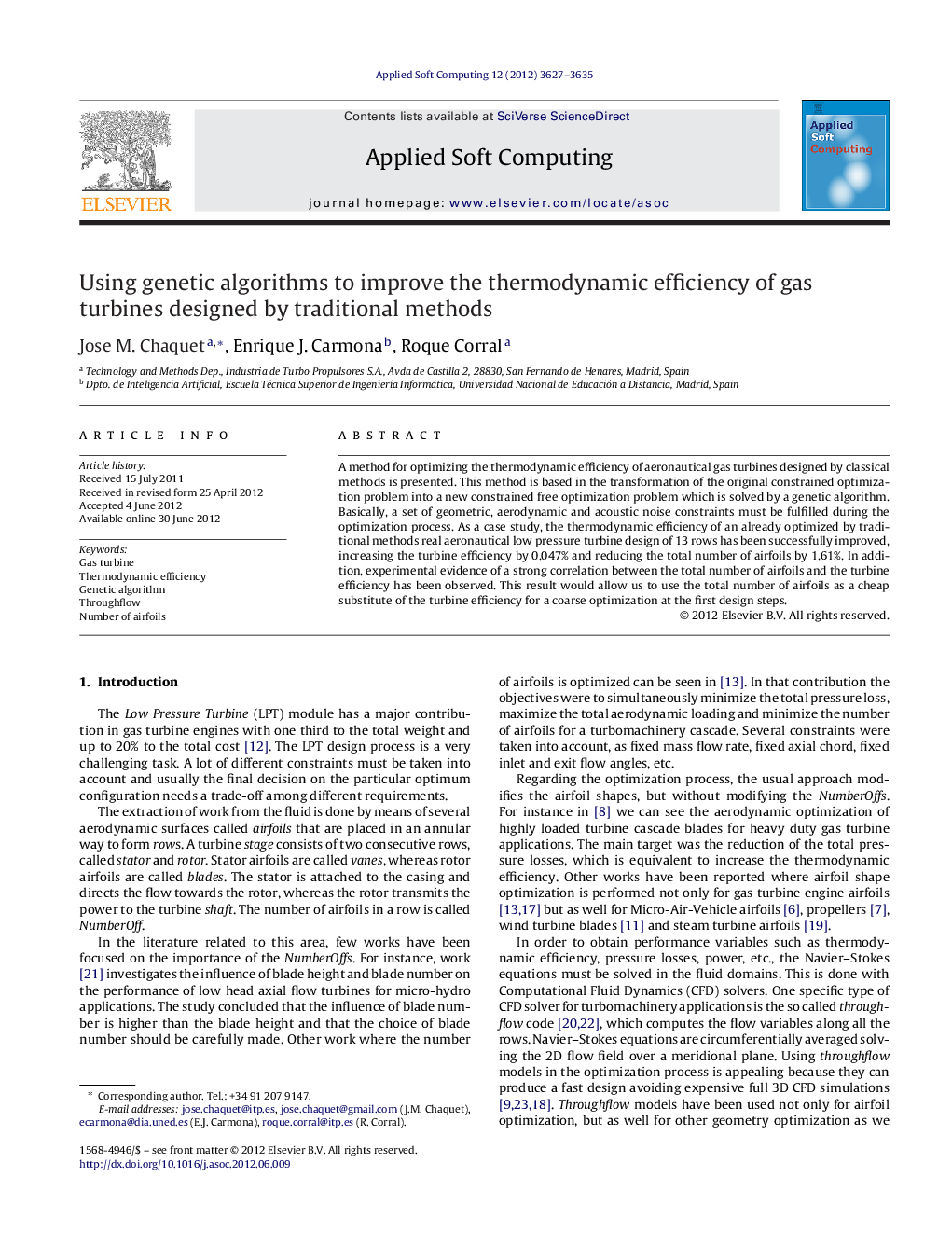| Article ID | Journal | Published Year | Pages | File Type |
|---|---|---|---|---|
| 496435 | Applied Soft Computing | 2012 | 9 Pages |
A method for optimizing the thermodynamic efficiency of aeronautical gas turbines designed by classical methods is presented. This method is based in the transformation of the original constrained optimization problem into a new constrained free optimization problem which is solved by a genetic algorithm. Basically, a set of geometric, aerodynamic and acoustic noise constraints must be fulfilled during the optimization process. As a case study, the thermodynamic efficiency of an already optimized by traditional methods real aeronautical low pressure turbine design of 13 rows has been successfully improved, increasing the turbine efficiency by 0.047% and reducing the total number of airfoils by 1.61%. In addition, experimental evidence of a strong correlation between the total number of airfoils and the turbine efficiency has been observed. This result would allow us to use the total number of airfoils as a cheap substitute of the turbine efficiency for a coarse optimization at the first design steps.
Graphical abstractFigure optionsDownload full-size imageDownload as PowerPoint slideHighlights► Optimizing the thermodynamic efficiency of an aeronautical gas turbine. ► Original constrained optimization problem solved by a genetic algorithm. ► Main design parameter: Number of airfoils. ► Turbine efficiency increased by 0.047%. Number of airfoils reduced by 1.61%. ► Strong correlation between the total number of airfoils and the efficiency.
